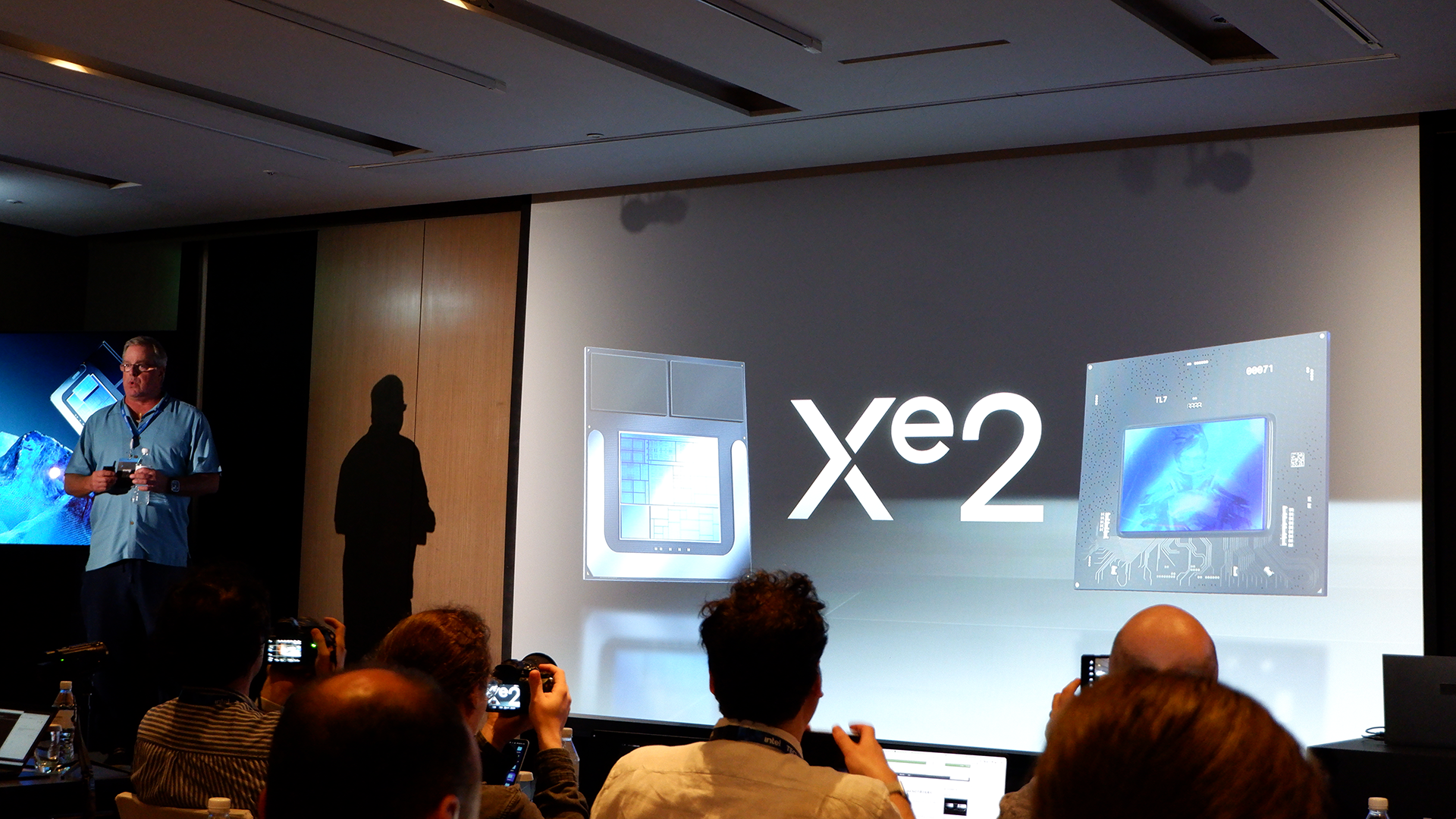
There's plenty of headroom for more powerful GPUs in the line-up, too.
Talk might revolve around AMD Strix Point and Intel Lunar Lake chips of late, but there’s plenty of hunger for discrete graphics cards, too. In fact, recent shipping data research points towards increasing interest in graphics cards compared to previously. In which case, Intel Battlemage could enter a very receptive market.
New Geekbench benchmark results (via Wccftech) show what is almost certainly a Battlemage engineering sample hitting performance levels somewhere between an RTX 3060 and RTX 4060. This sample, it seems, has 11.6 GB VRAM, an extraordinary 2,850 MHz clock speed, 160 Xe Vector Engines (XVEs), and presumably 20 Xe-cores, given that Xe 2 GPUs have 8 Vector Engines per Xe-core.
The benchmark lists the GPU as “8086:E20B” and Wccftech notes that this device ID has previously cropped up in Linux drivers as a “G21” codenamed GPU. It’s quite likely, therefore, that this is in fact a Battlemage GPU benchmark result.
Intel’s next-gen Battlemage discrete graphics cards are officially coming, and they boast the same Xe2 graphics architecture as found in the latest Lunar Lake mobile processors. We already know from testing Lunar Lake that Xe2 offers a significant step up in gaming performance over Xe graphics such as is found in Meteor Lake laptops, so we can expect similar pound-for-pound (so to speak) improvements from Battlemage.
And to be quite clear, Lunar Lake is seeming quite phenomenal on the graphics front. Our testing shows, for instance, a 30% increase in Time Spy GPU scores compared to first-gen Xe graphics. Given this, it’s plenty reasonable to be excited about the prospect of this architecture finding its way into our rigs in discrete form.
What gives, then, with this apparent Battlemage GPU’s 97,943 score? After all, that’s a fair whack less than the previous-gen Intel Arc A770 can achieve. Looking at GPU benchmarks in systems with similar specs to that which the apparent Battlemage system was running, an RTX 3060 scores about 93,000, and an RX 7700 XT scores about 133,000.
[GB6 GPU] Unknown GPUCPU: Intel Core i5-13600K (14C 20T)CPUID: B0671 (GenuineIntel)GPU: Intel Xe Graphics RIAPI: Open CLScore: 97943PCI-ID: 8086:E20BVRAM: 11.6 GBhttps://t.co/GTPSvypbevSeptember 25, 2024
There are two answers to this question. First, this is only an engineering sample. Although we’re hoping for Battlemage GPUs to hit the market over the coming months, there’s no reason to assume this benchmark comes from a final or even close-to-final engineering sample. Final samples, when optimised and, y’know, finalised, could perform much better.
Second, 20 Xe-cores isn’t many and is far less than the number found in previous-gen Intel Arc graphics cards. For reference, the A770 has 32 Xe-cores and the A750 has 28.
Under that light, a 94k Geekbench score isn’t too bad—especially for an engineering sample. Assuming this actually is Battlemage, this would mean it will perform at the very least marginally better than the A750 despite having eight fewer Xe-cores. Ie, a very nice gen-on-gen architectural improvement.
(Image credit: Future)
Best CPU for gaming: The top chips from Intel and AMD.
Best gaming motherboard: The right boards.
Best graphics card: Your perfect pixel-pusher awaits.
Best SSD for gaming: Get into the game ahead of the rest.
If such a 20 Xe-core, 12 GB VRAM Battlemage graphics card does launch, we’ll still be expecting higher-end ones down the line. Previous rumours had us expecting one with 32 Xe-cores, which, when combined with this possible gen-on-gen improvement, could make for that previous rumours would have us expecting
For instance—and to make the maths easy—an engineering sample with 30 Xe-cores should be 50% faster than this 20-core one. Which would make for a score of about 147k, which is better than an RX 7700 XT and is approaching RTX 4070 territory. Which is exactly the segment we already hoped and expected Battlemage would target.
The mid-range segment is certainly the one to target and the one most gamers will be looking towards. And, of course, we can still hope to see these numbers climbing as engineering samples improve and Battlemage gets closer to release. If Lunar Lake’s been anything to go by, we can maybe allow some slight stirrings of excitement.






